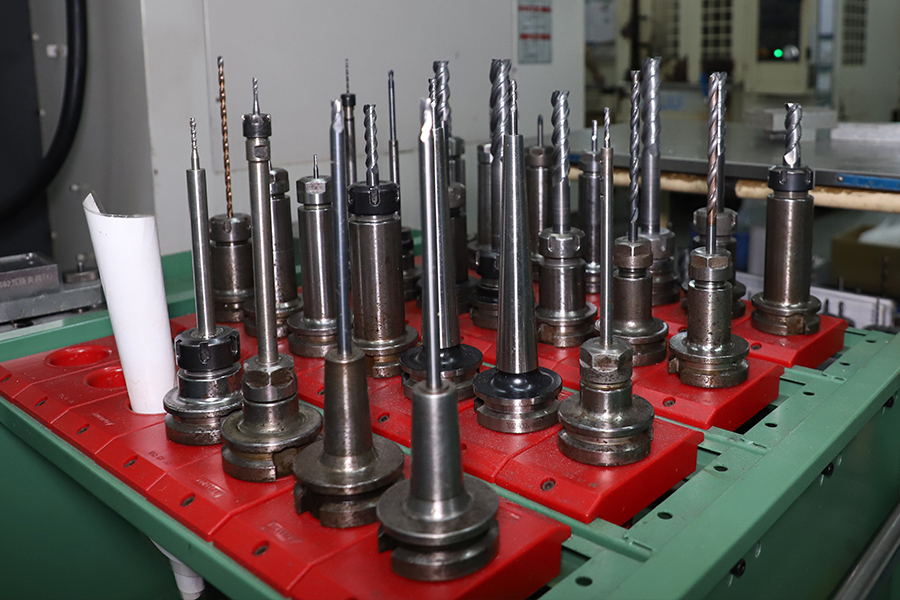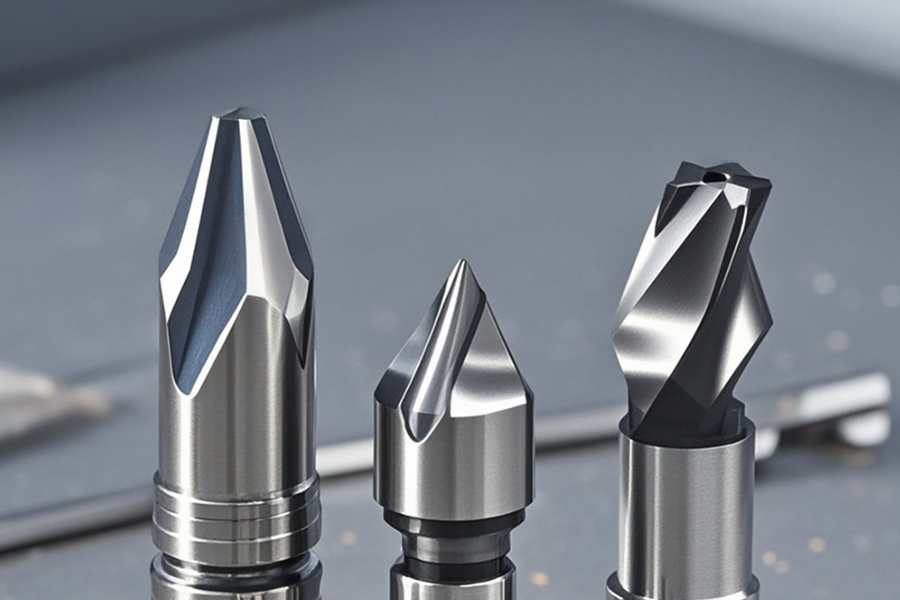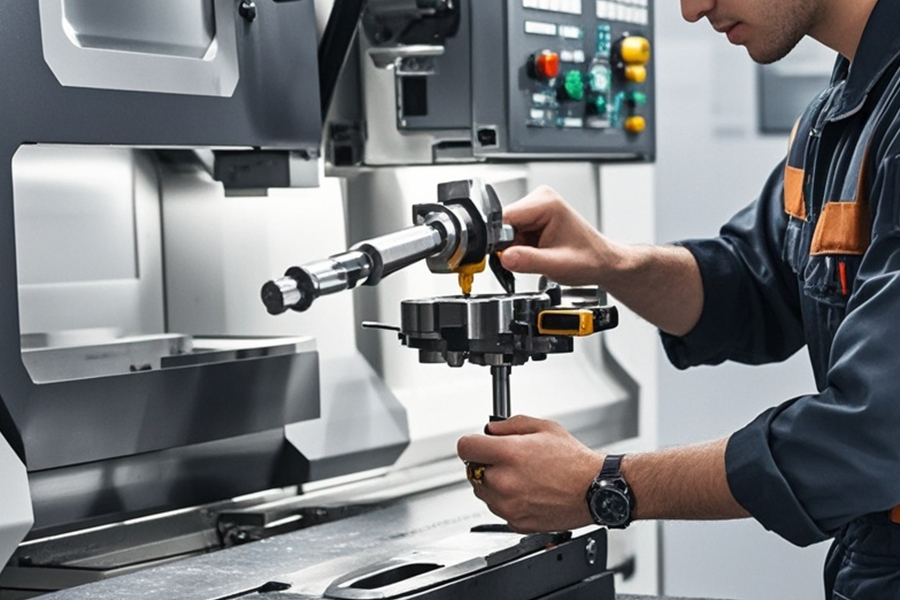
Adatvédelmi nyilatkozat: Az Ön adatvédelme nagyon fontos számunkra. Cégünk megígéri, hogy nem tesz közzé személyes adatait semmilyen kitettségnek az explicit engedélyekkel.

Importance of tool materials
Tool materials are the basis for determining tool performance. Common tool materials include high-speed steel, cemented carbide, ceramics, and superhard materials (such as cubic boron nitride and diamond):
High-speed steel: It has good toughness and machinability, and is suitable for processing some parts with complex shapes that do not require extremely high precision, or for use under low-speed cutting conditions. For example, when making some initial models of dental equipment, high-speed steel tools may be used for rough processing, because at this time, more attention is paid to processing flexibility and cost control.
Cemented carbide: It has high hardness, good wear resistance, and strong heat resistance. It is one of the most widely used tool materials. In the medical equipment and parts industry, cemented carbide tools can perform excellent performance for the processing of most metal parts. For example, when processing the metal shell of medical devices, carbide tools can maintain good cutting performance at a higher cutting speed to ensure the quality and precision of the processed surface.
Ceramic tools: With the advantages of high hardness, high wear resistance, and good high-temperature chemical stability, they are suitable for high-speed cutting and dry cutting. In the processing of some medical parts with extremely high surface quality requirements and micron-level processing accuracy, ceramic tools can effectively reduce the roughness of the processed surface and improve the surface quality of the parts. For example, when processing precision dental implants, ceramic tools can achieve more precise cutting, ensure the smoothness of the implant surface, and facilitate its integration with human tissue.
Superhard material tools: Cubic boron nitride tools are second only to diamond in hardness and wear resistance, and are suitable for processing high-hardness materials, such as some special alloy materials for medical devices. Diamond tools have extremely high hardness and wear resistance, and are mainly used to process non-metallic materials, such as in ophthalmic medical devices, for processing some high-precision plastic lenses or glass products.

Influence of tool geometry
The tool geometry includes parameters such as tool tip radius, blade inclination angle, front angle, and back angle, which directly affect the tool's cutting performance and processing quality.
Tool tip radius: A smaller tool tip radius can improve the accuracy of the machined surface, but at the same time it will reduce the tool's strength and durability. When processing high-precision medical parts, it is necessary to select a suitable tool tip radius based on the size and accuracy requirements of the parts. For example, for some tiny dental equipment parts, a tool with a smaller tool tip radius may be required to achieve fine processing; while for some larger parts, in order to ensure the durability of the tool, a tool with a larger tool tip radius can be appropriately selected.
Blade inclination angle: A reasonable blade inclination angle can control the flow direction of the chips and improve the cutting stability of the tool. During the processing, according to different processing materials and processing methods, selecting a suitable blade inclination angle can effectively reduce the scratches on the processing surface caused by the chips and improve the processing quality. For example, when processing some materials that are prone to produce strip chips, selecting a suitable negative blade inclination angle can allow the chips to be discharged smoothly, avoiding the chips from wrapping around the tool and affecting the processing accuracy and safety.
Rake angle and back angle: Increasing the rake angle can reduce the cutting force and improve the sharpness of the tool, but it will reduce the strength of the tool; increasing the back angle can reduce the friction between the tool and the workpiece, but too large a back angle will reduce the durability of the tool. In practical applications, the rake angle and back angle need to be comprehensively selected according to the hardness, toughness and other characteristics of the processed material. For medical equipment parts with higher hardness, a smaller rake angle and a larger back angle are usually selected to ensure the cutting edge strength and wear resistance of the tool; while for some materials with lower hardness and better toughness, the rake angle can be appropriately increased to improve cutting efficiency.
Tool maintenance and management
In order to ensure the performance and service life of the tool, the maintenance and management of the tool is also very important.
Tool storage: The tool should be stored in a dry and clean environment to avoid rust and damage. For some high-precision tools, a special tool box or tool rack is also required for storage to prevent collision and wear between tools.
Tool sharpening: Regular sharpening of the tool is the key to maintaining the sharpness and cutting performance of the tool. According to the use of the tool and the material characteristics, select the appropriate sharpening method and sharpening equipment. For some superhard material tools, special sharpening processes and equipment may be required.
Tool detection: Before using the tool, the tool's dimensional accuracy, shape accuracy and cutting edge status should be detected to ensure that the tool meets the processing requirements. During the processing, the tool should also be regularly inspected to detect tool wear and damage in time so that the tool can be replaced in time.

In precision CNC machining machine tools, the selection and application of tools is a comprehensive technical issue that requires consideration of multiple factors such as tool materials, geometric shapes, processing technology, and workpiece materials. Airy Precision Machinery has accumulated rich experience in the processing of medical equipment and parts industry through continuous exploration and practice. It can select suitable tools according to different processing requirements and reasonably apply tools to achieve high-precision and high-efficiency processing, making important contributions to promoting the development of the medical equipment and parts industry. At the same time, paying attention to the maintenance and management of tools is also an important link in ensuring processing quality and production efficiency. Only by doing a good job in the full life cycle management of tools can the performance advantages of tools be fully utilized and sustainable precision processing can be achieved.
Author:
Mr. Ares team
E-mail:
November 20, 2024
November 12, 2024
E-mailt küld a szállítónak
Author:
Mr. Ares team
E-mail:
November 20, 2024
November 12, 2024

Adatvédelmi nyilatkozat: Az Ön adatvédelme nagyon fontos számunkra. Cégünk megígéri, hogy nem tesz közzé személyes adatait semmilyen kitettségnek az explicit engedélyekkel.

Töltsön ki további információkat, amelyek gyorsabban kapcsolatba léphetnek veled
Adatvédelmi nyilatkozat: Az Ön adatvédelme nagyon fontos számunkra. Cégünk megígéri, hogy nem tesz közzé személyes adatait semmilyen kitettségnek az explicit engedélyekkel.